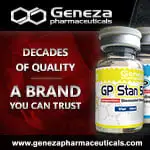Punschkrapfen
New member
thelegacy said:--what else would it be---too much fruit juice!
could have been due to a lot of things; read:
[Drug-induced liver diseases]
Z Gastroenterol 2002 May;40(5):305-26 Related Articles, Links
[Article in German]
Teschke R.
Medizinische Klinik II, Klinikum Stadt Hanau, Akademisches Lehrkrankenhaus der Johann Wolfgang Goethe-Universitat Frankfurt/Main, Germany.
About 1000 drugs produced world-wide may lead to clinically relevant hepatotoxic reactions which are unpredictable at normal doses and occur at various frequencies. Among these are well established therapeutic drugs which have been in use for years or decades as well as newly introduced drugs, the number of which is steadily increasing. For the development of drug-induced liver disease, various pathogenetic mechanisms, many risk factors and variable latency periods are known. The histological picture may imitate practically all known non-toxic liver diseases from which toxic liver disease needs to be differentiated. Patients under drug therapy require regular medical follow-up with regard to the development of toxic liver disease since the prognosis is only good with early recognition and immediate withdrawal of the alleged drug. Specific therapeutic modalities to prevent toxic liver disease are limited to paracetamol overdosage which is treated by the application of N-acetylcysteine. For other drug-induced liver diseases characterised by a prolonged course, therapy with ursodeoxycholic acid or steroids may be helpful. When fulminant drug-induced liver failure occurs, liver transplantation is the therapy of choice with a better prognosis than a conventional therapy. Despite this therapeutic option more than 40 different drugs are known to have caused lethal forms of toxic liver disease. Physicians have therefore to be alert to early recognize drug-induced liver disease and to withdraw the drug at first suspicion of the diagnosis.
you can kill yourself with an OTC NSAID like paracetamol (acetaminophen), read:
Lancet 2001 Nov 10;358(9293):1612-3 Related Articles, Links
Referral patterns and social deprivation in paracetamol-induced liver injury in Scotland.
Newsome PN, Bathgate AJ, Henderson NC, MacGilchrist AJ, Plevris JN, Masterton G, Garden OJ, Lee A, Hayes PC, Simpson KJ.
Paracetamol overdose is the commonest cause of acute liver failure in the UK, which has led to measures to restrict its sale. We aimed to establish whether changes in the referral of patients with paracetamol-induced acute liver failure have occurred since the introduction of legislation. We compared data from patients admitted to the Scottish Liver Transplantation Unit in 1992-98 with those admitted in 1998-2001. The incidence of paracetamol-induced liver failure, severity of patients' illness, and outcome did not differ between the groups. Patients with paracetamol-induced acute liver failure had higher Carstairs scores (1.99 [95% CI 1.33-2.65]; n=190) than patients with non-paracetamol acute liver failure (0.02 [-0.79 to 0.84]; n=68). We have shown an association between paracetamol-induced acute liver failure and social deprivation.


 Please Scroll Down to See Forums Below
Please Scroll Down to See Forums Below 










